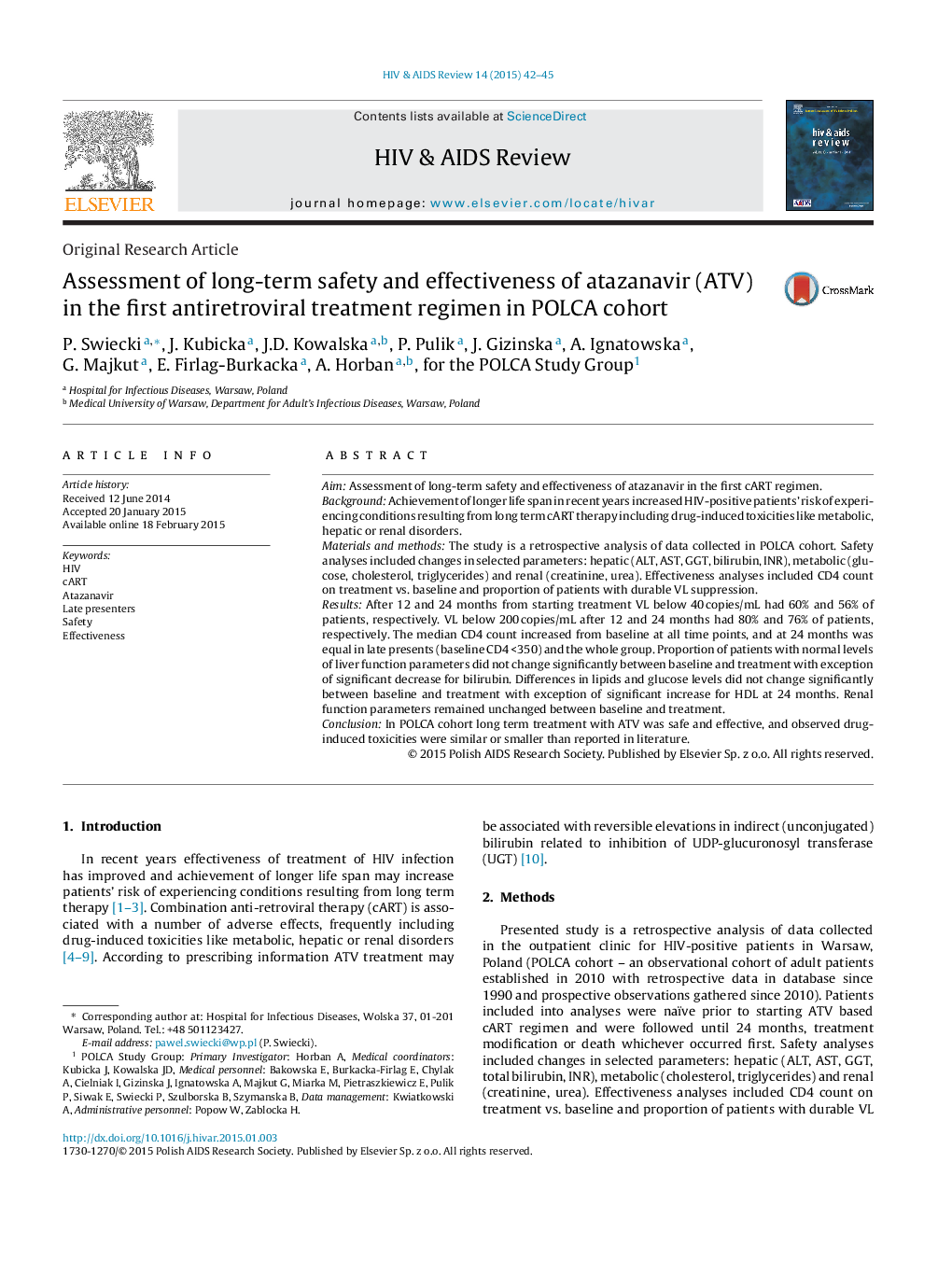| Article ID | Journal | Published Year | Pages | File Type |
|---|---|---|---|---|
| 3332302 | HIV & AIDS Review | 2015 | 4 Pages |
AimAssessment of long-term safety and effectiveness of atazanavir in the first cART regimen.BackgroundAchievement of longer life span in recent years increased HIV-positive patients’ risk of experiencing conditions resulting from long term cART therapy including drug-induced toxicities like metabolic, hepatic or renal disorders.Materials and methodsThe study is a retrospective analysis of data collected in POLCA cohort. Safety analyses included changes in selected parameters: hepatic (ALT, AST, GGT, bilirubin, INR), metabolic (glucose, cholesterol, triglycerides) and renal (creatinine, urea). Effectiveness analyses included CD4 count on treatment vs. baseline and proportion of patients with durable VL suppression.ResultsAfter 12 and 24 months from starting treatment VL below 40 copies/mL had 60% and 56% of patients, respectively. VL below 200 copies/mL after 12 and 24 months had 80% and 76% of patients, respectively. The median CD4 count increased from baseline at all time points, and at 24 months was equal in late presents (baseline CD4 <350) and the whole group. Proportion of patients with normal levels of liver function parameters did not change significantly between baseline and treatment with exception of significant decrease for bilirubin. Differences in lipids and glucose levels did not change significantly between baseline and treatment with exception of significant increase for HDL at 24 months. Renal function parameters remained unchanged between baseline and treatment.ConclusionIn POLCA cohort long term treatment with ATV was safe and effective, and observed drug-induced toxicities were similar or smaller than reported in literature.
